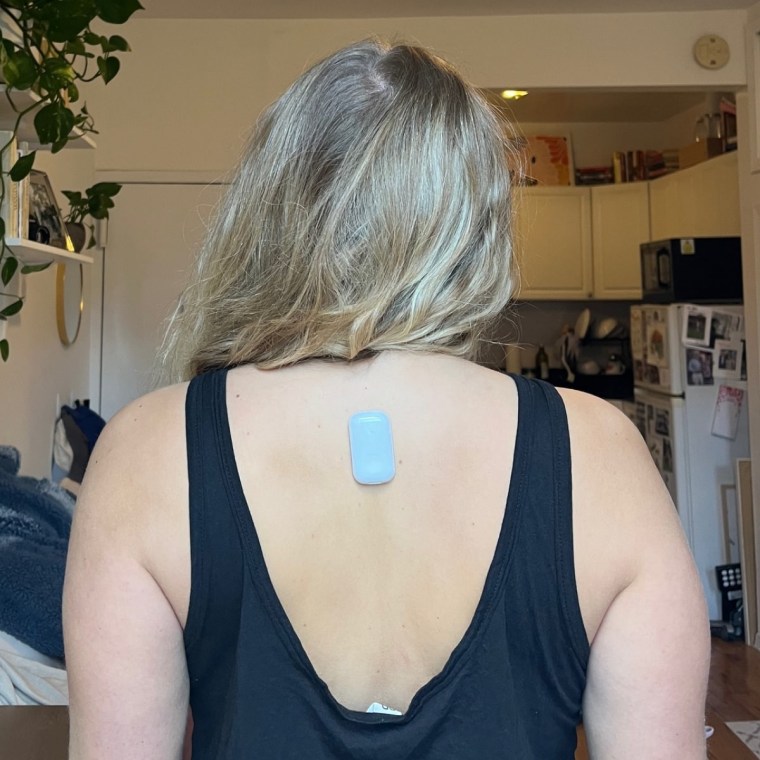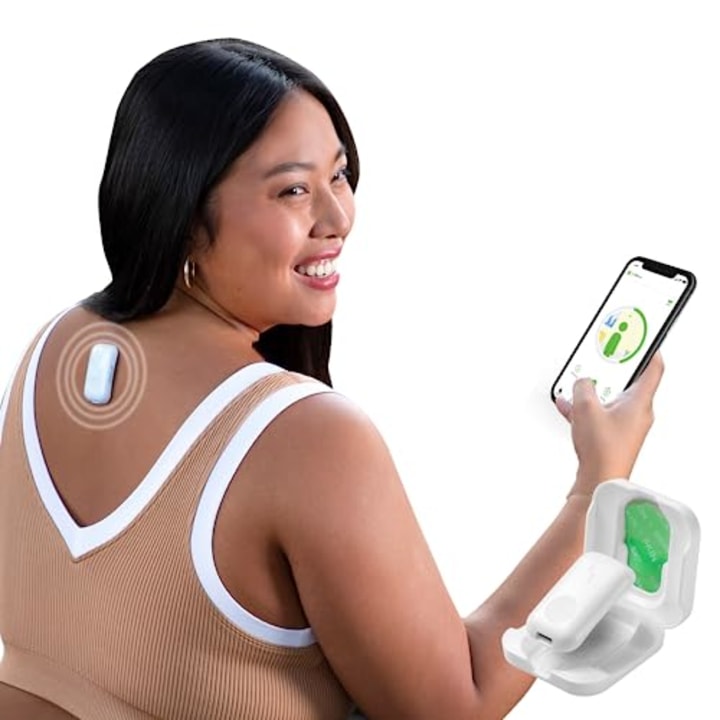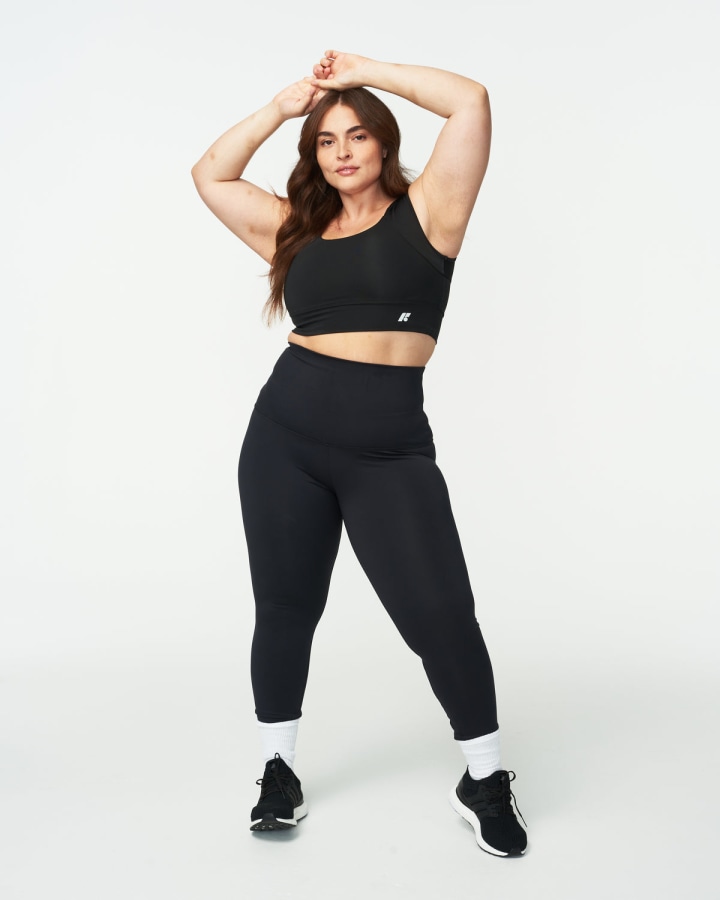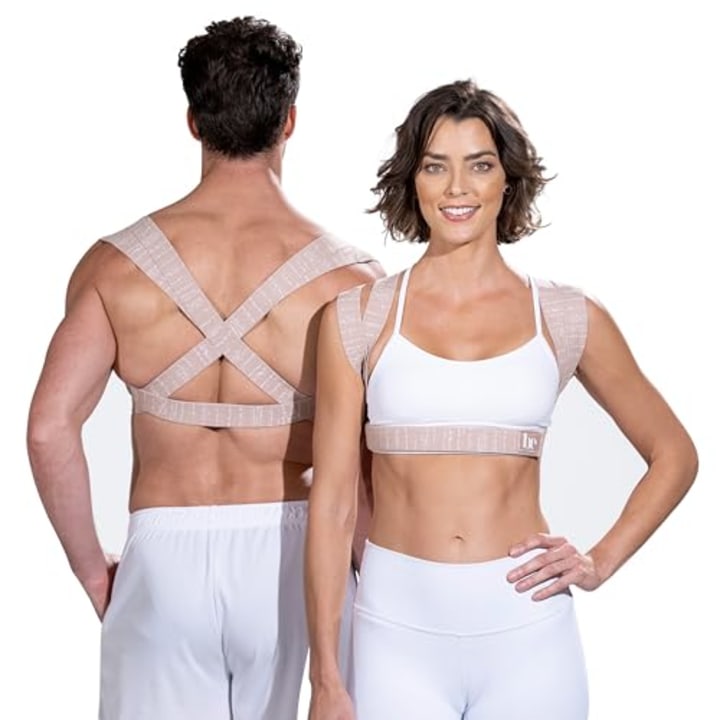I've always envied people who have great posture. And not just because it can help you look taller and more commanding, but experts say that having good posture also has a host of benefits for your body overall.
Unfortunately, I ignored my grandma every time she told me to "stand straight" and "keep my shoulders back," while growing up. Now, years of slouching and sitting hunched over a computer has left me with permanently poor posture — and I'm not the only one.
"Especially in today’s society, we lead very forward-oriented lives," shares Dr. Jacob VanDenMeerendonk, a physical therapist in Southern California. "Cell phones, computers, long driving commutes in the car, all contributing to rounded shoulders, forward head postures, flattened or rounded lower backs and hip tightness and tension."
And poor posture can have effects far beyond your shoulders looking slouched. As Dr. Karena Wu, owner of ActiveCare Physical Therapy, explains, "Proper posture is extremely important for your health."
"Poor posture can cause issues with major health systems like your cardiovascular, respiratory, digestive, psychological and musculoskeletal systems," she continues.
But I've come to realize that fixing years of poor posture isn't as simple as reminding myself to sit up straight whenever I remember (which is not very often). That's why, recently, when I saw different types of posture correctors popping up on my social media pages, I knew I wanted to try them. Over the last month, I tried three different posture correctors off and on to see if they could make a difference. Plus, I asked the two experts their thoughts on whether they might be effective.
Do posture correctors work? | FAQs | How we chose | Meet our experts
Do posture correctors work?
"Posture correctors are great at-home and daily pieces of equipment that can help correct someone’s posture," shares Wu. "They are reminders to sit or stand upright and to use your postural muscles appropriately."
That being said, using them too much can create a reliance on the corrector, which can potentially actually weaken your postural muscles, VanDenMeerendonk says.
Upright GO 2
- Discreet
- Can be turned on and off
- Requires app to work
One common type of corrector is a digital device, like this one. Sure, the little gadget got me some pretty funny comments when I showed it to my friends — one person compared it to a dog shock collar and another said it made me look like a robot — but I was surprised at how effective it was.
To use it, you either stick the adhesive on the device directly onto your back or wear it with the magnetic necklace (which you can get on Amazon). I used the adhesive method and stuck it directly on. Getting it set up is easy, though to work, it requires that you download the brand's app. From there, you can calibrate your device to your proper posture — so whenever you slouch throughout the day, it will gently vibrate to alert you to your poor posture (so, no it doesn't shock you).
At the end of the day it tells you how many minutes you spent with proper posture and your percentage of slouching versus upright time. When I wore it over consistent days, I saw an improvement in my percentages for the day.
"Digital postural correctors can work to help send you reminders to correct your posture," Wu shares. "You can track your progress on your smarphone. You do have to pay attention to not ignore the alert, in order for these to work and the adhesive should stick well and not create any irritation."

I found it to be most helpful when I was sitting at my desk and working at my computer. While simply wearing the device helped me pay more attention to my posture in general, when I'd forget and start to slouch, the light buzz would bring my focus back to how I was sitting. It's not the best for activities where you might need to bend over or be moving your body a lot. I had to turn it off at times since it would buzz at me while I was tying my shoes or collecting packages.
It stays on really well throughout the day, but you can easily remove it without any pain or residue from the adhesive. (However, I wore it during a workout and found that sweat will make it fall off.) Plus, the adhesive lasts multiple days before you have to switch it out.
Forme Power Bra
- Looks cute
- Different colors available
- Can rub under armpits
The Forme bra was the one that I was most excited to try. I had seen ads for the bra-style corrector all over social media (and even on one of my favorite celebrities) and I loved that it looked just as stylish as it was functional. And after the brand sent me one to try, I was pleased to discover that my initial thoughts were correct.
The first time that I put on the bra I instantly felt it gently pulling my shoulders down and away from their usual position up by my ears. According to the brand, the bra uses a blend of six varied tension fabrics and eight double-fabric panels to help pull your shoulders back and down and train your body’s muscles to stay in alignment.
Like Upright Go, the biggest effect that it had was that it actually made me think about my posture. While it did gently pull my shoulders downward, it was also a constant reminder to pull them even further down and back.

The bra comes in multiple colors (and it's so popular that some are selling out), but I went with the black. I loved how it felt supportive enough that I could wear it for workouts and that it has a longline design, so I felt comfortable wearing it as a top with high-waisted leggings.
I'm normally a size small, which is the size I got, but the top felt snug, particularly around the arms. The brand suggests stretching the armhole before wearing, but even still, it felt tight in the area and if I wore it for high-movement activities, I could feel it starting to irritate my under-arms. So if I were to order another one, I would likely choose the medium.
While VanDenMeerendonk says that posture bras like this one can be a helpful tool for some, "the problem with these is that many people will decide to wear these all day. Many of these garment devices are built for comfort which seems logical, but if we start to rely on these wearables to hold ourselves upright in what we might consider 'proper posture,' we may develop reliance and dependency which can ultimately lead to muscle atrophy and other unwanted issues."
I only wore the bra for a few hours at a time, mostly during workouts or on walks. At the end of those few hours, I would find that my shoulders felt sore from being held in the position for a long period of time. When I took it off though, my shoulders would go back to their normal slouched posture unless I made an effort to correct it.
Backembrace Posture Corrector
- Smooth straps
- Can be worn under clothes
- Only goes up to XL size
I felt the most difference when wearing this corrector from BackEmbrace. The brand only recommends wearing it for 20 to 30 minutes at a time to start, which seems like a short period of time, but once I started wearing it, I understood why. It has two arm straps that wrap around your back in a crisis cross pattern and then are fastened at the front under your chest with a velcro strap. The straps pull your shoulders down and back, so much so that it actually takes physical effort to get them back into a forward-slouched position.
"This brace helps pull your shoulders back, which immediately pulls your head and neck back as well, stacking everything vertically," shares Wu. However, there are some things to keep in mind when wearing it. "The downsides to this brace are the elastic being too stretchy and compressing your ribs which can restrict your respiration. The placement of the straps in the armpit or axilla, can cause discomfort because this is a high friction area."
When wearing it for activities where I was moving around, and not simply sitting at my desk, I did start to experience some discomfort under my arms where the straps hit.
All in all, while I can't say that my posture significantly changed after wearing these devices sporadically over the last month, they did make me more aware of my posture. So even when I'm not wearing them, I find myself pulling my shoulders back and down more often. If you want to try them for yourself, here are some other things the experts say you should keep in mind.
FAQs
How we chose
We looked at three popular posture correctors and spent hours trying each one. We also spoke to experts to get their thoughts on the various devices.
As an editorial team, we independently create content and determine coverage based on research, reporting and what we think TODAY.com readers would like to read about. The goal of our content is to provide a service and inform readers who are on the hunt for the latest products to help make their lives better. Items are sold by retailer, not TODAY. Pricing and availability are accurate as of publish time. Learn more about Shop TODAY.
Meet our experts
- Dr. Jacob VanDenMeerendonk, PT, DPT, is a doctor of physical therapy in Southern California. He has been a practicing physical therapist in Southern California for over nine years. His focus has been orthopedics, kinesiology and mobility.
- Dr. Karena Wu, PT, DPT has been practicing physical therapy for 23 years in New York City. She is the owner of ActiveCare Physical Therapy in NYC and India. She is a board-certified clinical specialist in orthopedic physical therapy and a fellow of the International & American Academy of Orthopedic Manual Physical Therapists.




